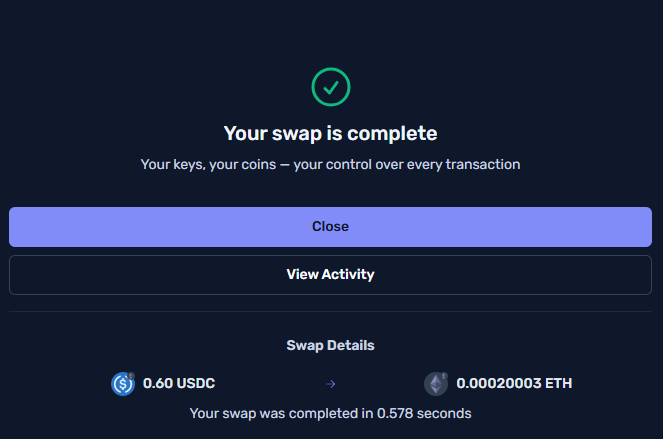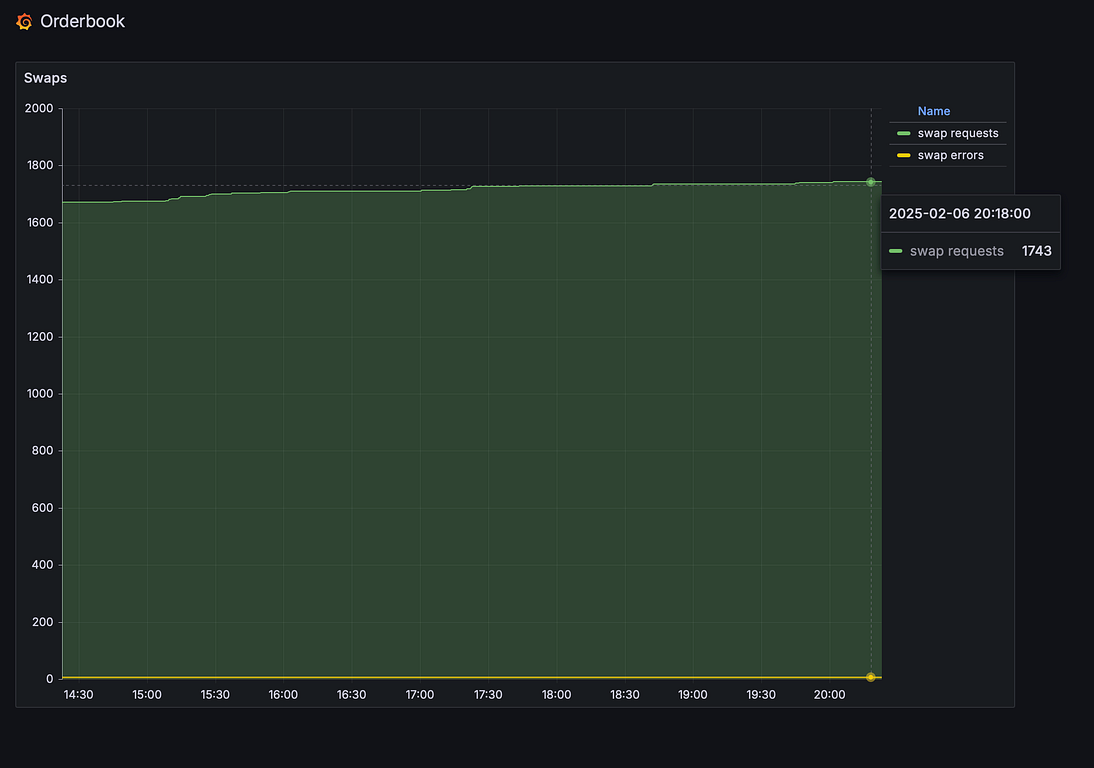Hydranet Monthly Recap #32 — February 2025

February brought significant progress for Hydranet, including Alpha testnet expansion with 12 new testers, Web DEX improvements, and increased platform stability. The swap success rate remains high at over 99% with record swap times of under 0.6 seconds. Key frontend and backend updates improved the order book, Lightning and Lithium protocols, and overall user experience. We also released an updated Litepaper and quickly integrated the Sepolia testnet to keep development on track following the Holesky outage. Read on for all the details!
Hydranet Testnet Expansion
One of the biggest milestones this month was the expansion of our Alpha testnet group! We welcomed 12 new participants, bringing the total number of active testers to over 20, all rigorously testing every aspect of our Web DEX.
With recent updates to the order book and Lithium protocol, platform stability has significantly improved. The feedback from our new testers has been invaluable, helping us refine the platform further. Our swap success rate remains impressively high at over 99%, with a record swap time of under 0.6 seconds!

The primary focus of the Alpha testing phase remains platform stability. Most of our current stability challenges stem from integrated Lightning off-chain nodes, occasionally leading to rare cases of crashing nodes, forced Lightning channel closures, or Lightning payment failures. Our team, with support from Lightning Dev Kit, is actively investigating and resolving these issues.
Once we’re confident in the system’s robustness, we’ll continue expanding the Alpha testnet, gradually onboarding more participants from our waitlist. Our goal is to uncover and resolve as many edge cases as possible before moving Hydranet into the next phase. So stay tuned for more updates!

Development updates in focus
As for this month’s development updates, we’ve seen the following progress across the Web DEX development tracks.
Frontend
Continuous debugging and UI improvements based on Alpha tester’s feedback, including refinements in how numbers are displayed (or hidden) upon entering them into input fields, clearer explanatory texts, better wallet balance behaviour upon sending and receiving assets, and more.
The order book interface is actively in development but has not yet been rolled out to Alpha testers. Since many of its backend functions are already used in the SimpleSwap UI, we anticipate a relatively smooth integration of the order book interface.
Additionally, we’re developing the Liquidity tab, allowing users to place liquidity directly on the order book, similar to traditional decentralized exchanges. Users will be able to specify the amount and min/max price, effectively creating a liquidity pool between set price points.
Backend
One of the most exciting backend updates, yet to be introduced to Alpha testers, is the development of the SimpleSwap logic. Currently, testers must manually set up state channels and manage balances before swapping. However, once fully developed, the SimpleSwap logic will automate the entire process — from channel creation and swaps to channel closures.
Besides progress on the SimpleSwap logic, other backend developments thi month include:
- Trading history API: Nearing completion, this will soon integrate with the frontend order book interface, allowing for a classic spot order book that displays past orders.
- Lightning and Lithium updates:
- We’ve updated Lightning Dev Kit (LDK) and Bitcoin Dev Kit (BDK) to their latest versions, improving Lightning functionality and reliability.
- An edge case bug was discovered in Lithium V3 related to closing state channels holding multiple assets. This led to refinements in off-chain logic and response messaging. - Data reliability improvements: We’ve successfully transitioned from Covalent to Etherscan, enhancing data retrieval reliability.
- State channel validation: A new state channel balance check prevents the order book from accepting orders from users with insufficient funds.
Hydranet Litepaper Update
We’re constantly refining how we present our unique project, and this month, we released an updated Hydranet Litepaper with clearer technical explanations, refined use cases, and a design that falls in line with the Hydranet branding. Check it out here and let everyone you know have a read: Hydranet Litepaper
Upsid3rs X Space
Walleye and Max from Hydranet joined Upsid3rs_0x for a live X Space discussion covering our project. It was a fruitful one hour-session about our technology, roadmap, DAO, decentralization, and more. If you missed it, you can catch the replay here: Upsid3rs X Space
Support Our Testers — Sepolia Testnet Funds Needed
Unexpected challenges arose this month when the Pectra upgrade caused a misconfiguration, halting the Holesky ETH testnet — which we rely on for development and testing. Rather than waiting for Holesky to recover, we quickly pivoted and integrated the Ethereum Sepolia testnet into our platform.
Initially, Sepolia testnet funds were scarce, but thanks to the community’s strong response, we now have sufficient funds to continue testing on both Holesky and Sepolia.
Thank you for supporting our development!